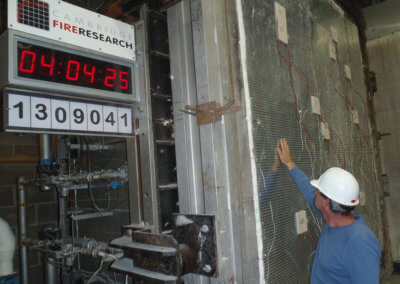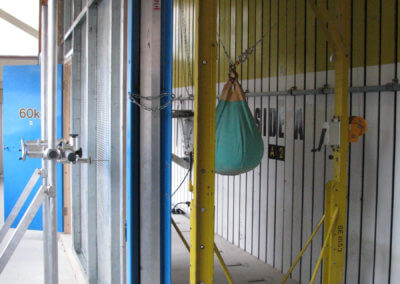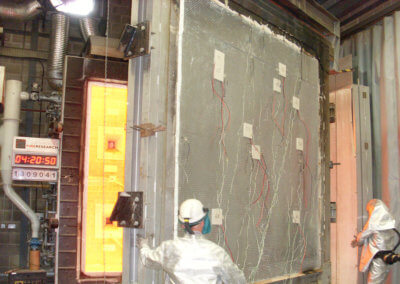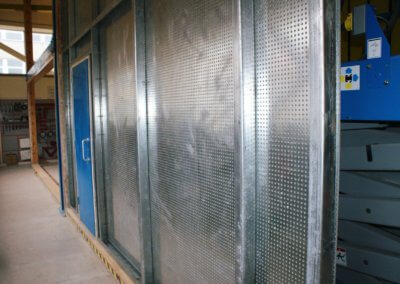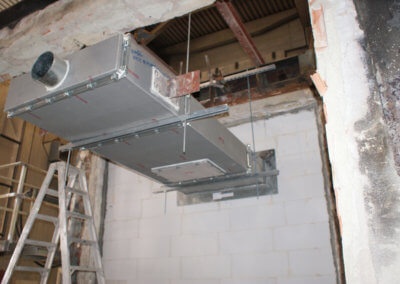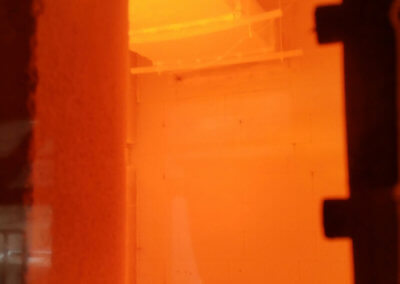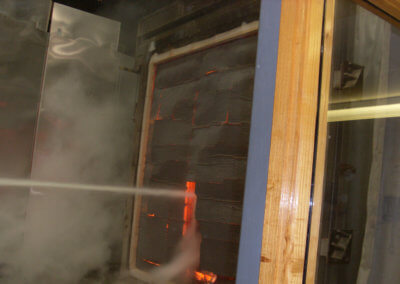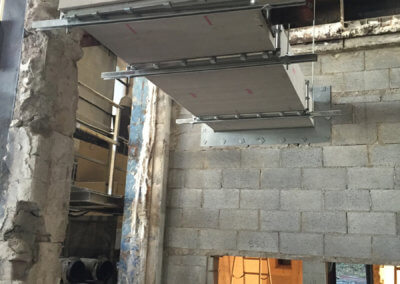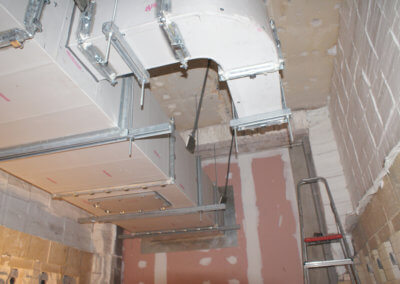TESTING
TEST CREDENTIALS
FIREMAC FM DUCTWORK SYSTEMS
The Firemac FM Fabric range of duct systems have been fully tested to both BS 476: Part 24: 1987, and to EN 1366-Parts 1, 8 and 9 for horizontal and vertical ducts.
Firemac ducts are approved for use as ventilation, smoke extraction, kitchen extraction and pressurisation ducts and offer up to four hours fire resistance.
FIREMAC FM BLUE
The Firemac FM Blue board has been tested in a range of systems, including BS 476: Part 22: 1987 for walls and ceilings, BS 476: Part 24: 1987 and EN 1366-1 for ducts etc. Firemac FM Blue has been subjected to a range of physical and mechanical performance tests to demonstrate the strength and robustness of the products and systems, including high impact and blast resistance.
FIREMAC FM FIRESTOP RANGE
The Firemac FM Fire Stopping range of products has been fully tested in accordance with the requirements of EN 1366-Parts 3 and 4, and classified for up to EI 240 in accordance with EN 13501-2 (for some products only to EI 120).
The Firemac FM Fire stopping range has been tested to meet the requirements of the Guideline for European Technical Approval (ETAG) No. 026-2 and 026-3 Fire Stopping and Fire Sealing Products; Part 2 Penetration seals, Part 3 Linear joint and gap seals.
FIRE TESTING AND CODES EXPLAINED
BS 476: Part 24: 1987 & UL 6944: 1985
BS 476: Part 24: 1987 and ISO 6944: 1985 (used by UL) also requires the duct which is intended for smoke extract to retain more than 75% of its cross-sectional area within the fire compartment. If the ductwork penetrates a fire-resisting barrier, it must be capable of providing the same period of fire resistance as the barrier.
This standard specifies a method of test and performance criteria for the determination of the fire resistance of vertical and horizontal ventilation ducts under standardised fire conditions. The general purpose of the test is to measure the ability of a representative duct or duct assembly to resist the spread of fire from one compartment of a building to another. It does include performance criteria for kitchen extract and smoke extract ducts. The performance of the duct assembly is measured in terms of its ability to withstand exposure to high temperatures by measuring across key performance criteria. Two ducts are tested, one with fire outside only (Duct Type A), i.e. no openings in the room on fire, and one with fire on the inside and outside (Duct Type B), i.e. there are openings in the duct in the room on fire.
Alternative tests are also used in various countries – these include EN 1366-Parts 1, 8, 9 and NFPA 92A as some of the most widely known.
ASTM E2336
ASTM E2336 (UL 2221), Standard Test Methods for Fire Resistive Grease Duct Enclosure Systems only exposes the inside of the duct to fire, and has two stages:
- Stage 1 lasts 240 minutes and represents normal operating conditions at 240° C.
- Stage 2 lasts 30 minutes. The temperature is increased to 1095°C for 30 minutes.
Satisfying the performance criteria for kitchen extract in BS 476: Part 24 (ISO 6944: 1985) requires the duct to be exposed for the full fire resistance period with the fire outside the duct (duct A) and the fire inside the duct (duct B). The ASTM standard E2336 exposes the inside of the duct to similar temperatures for only 30 minutes. The main difference is the requirement to expose the inside of the duct to 240°C for 240 minutes beforehand.
In reality, the duct is unlikely to be run at 240°C outside the kitchen. If ducts are uninsulated, the 240 minute period at 240°C is unlikely to have a noticeable affect.
We are not aware of any recorded examples of fires spreading to other compartments via fire resisting kitchen extract ducts that have been tested to BS 476: Part 24 (ISO 6944: 1985).
NFPA 92: Standard for smoke control systems
This is a guidance document on the containment and management of smoke in buildings. It includes details on design, installation, acceptance testing, operation and on-going periodic testing of smoke control systems. Although this guidance standard refers to specific test standards, it does accept alternative test standards of equivalent level of performance, subject to acceptance by the approval authority for the project. With regards to ductwork, the most relevant document that NFPA 92 refers to is NFPA 90A, Standard for the Installation of Air-Conditioning and Ventilation Systems.
NFPA 90A
NFPA 90A asks that coverings on steel ductwork have low flame spread and smoke development. This can be demonstrated by conducting the Steiner Tunnel Test, however other codes and standards use equivalent tests too, for example, BS and EN tests for smoke, flame and toxic fume.
With regards to fire resistance, NFPA 90A seems to largely rely on dampers. However, it does refer to NFPA 251, Standard methods of tests of fire endurance of building construction and material. This standard has also been withdrawn and the NFPA site states ‘Material found in ASTM E119 and UL 263’. UL 263 does not include a duct test and ASTM E119 is the same as BS 476 series.
TEST GALLERY
ANY QUESTIONS
FIREMAC FAQS
→


